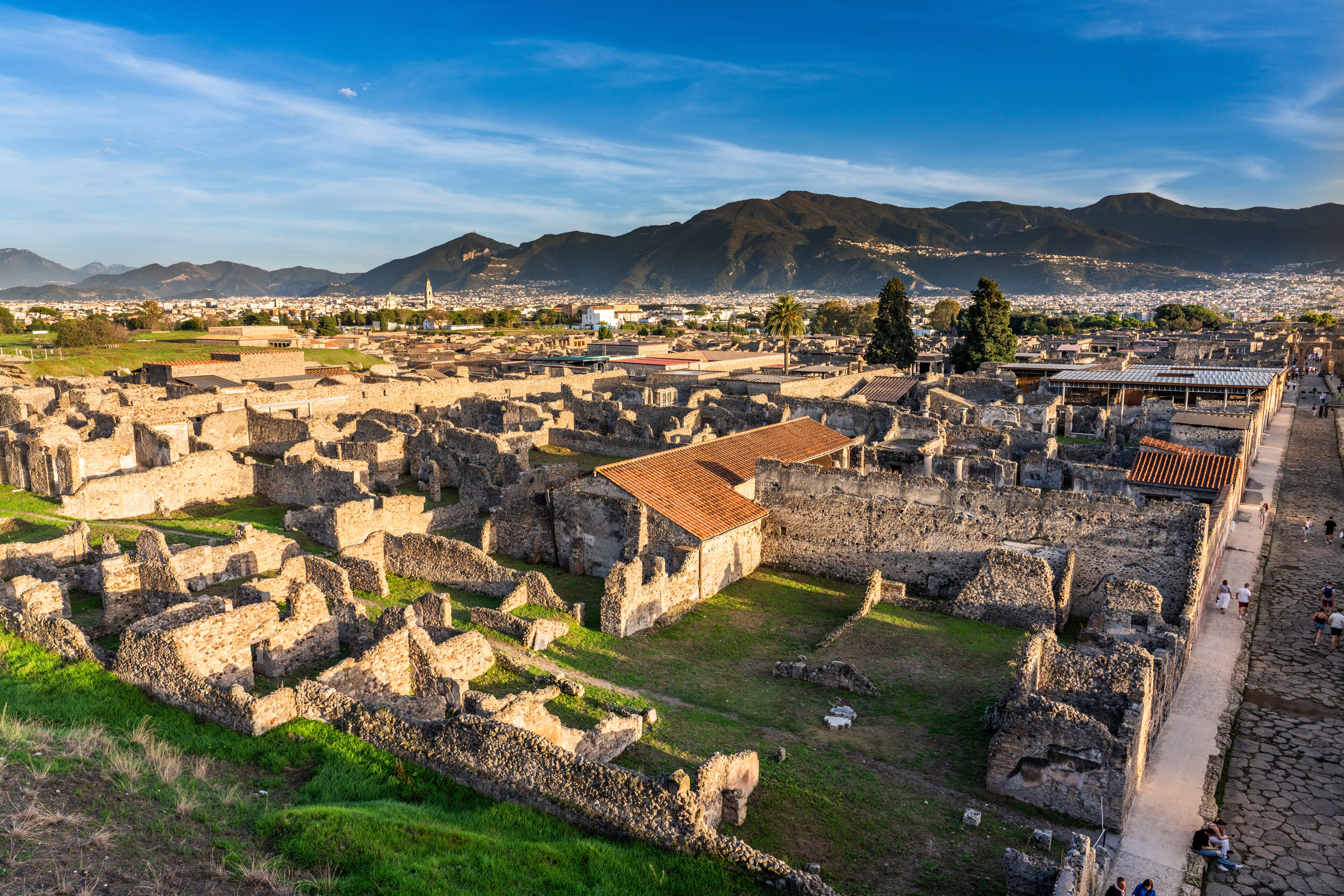Re-use and Rediscovery

Despite the disaster, some parts of the city of Pompeii were uncovered from the ash. Civita Hill, for example, was used for occasional farming and as a burial ground. Some of the remaining buildings were used for new purposes.
A bakery was built in a vaulted room, and some new features were added to partially restore the baths. Digging along the restored road outside the city uncovered and reused several buried structures, including the Moregine baths. These baths were partly reused, with a clay floor laid over the ash from the AD 79 eruption. However, another outburst led to their permanent desertion.
The real rediscovery of this ancient city didn't happen until the 16th century. Count Muzio Tuttavilla, unaware of the city's importance, built a canal. This canal revealed parts of the buried structures, giving people a peek into the past.
Early Excavation in Pompeii

Architect Domenico Fontana rediscovered the ruins of Pompeii in the late 16th century. Structured digging began at Herculaneum in 1709 and at Pompeii in 1748. An inscription found in 1763 confirmed the site as Pompeii. These early digs marked the birth of modern archaeology.
Under King Don Carlos of Naples, military engineer Karl Weber conducted systematic studies from 1750 to 1764. However, much of the early digging was chaotic and driven by treasure hunters. This changed in 1860 when Italian expert Giuseppe Fiorelli became the director of the excavations.
Fiorelli introduced more organized methods, clearing, and noting areas between excavation sites. He divided Pompeii into nine regions, numbering the blocks and doors for easy identification. Fiorelli also introduced the method of making casts of bodies. This involved pouring cement into the voids left by decomposed bodies in the volcanic ash.
His method of dividing the city and making body casts offered valuable insights into Pompeii's residents' lives and deaths. This ensured both the excavation and preservation of the city for future study.
In 1951, after World War II, Amedeo Maiuri resumed intensive digging, having overseen the site since 1924. Large areas south of the Via dell’ Abbondanza were uncovered, and debris outside the city walls was cleared. This work revealed the Porta di Nocera and a significant stretch of cemetery lining the road to Nuceria.
By the 1990s, around two-thirds of Pompeii had been dug up. Digging in nearby Stabiae and Gragnano, starting in 1749, uncovered 12 villas by 1782. In the 20th century, archaeological digs in Pompeii revealed well-preserved sites like the Villa of San Marco, known for its gardens and baths.
Other villas were discovered in different places, and some were buried again after digging. But, others remained visible, offering a peek into what life was like before the eruption.
Earlier digging projects at Pompeii focused on grand structures and the elite of the city. But recent projects have shifted focus towards ordinary people, rather than just the grand houses. Experts have found interesting artifacts, such as a large oven for baking. They also discovered a well-preserved ancient fast-food eatery called a Thermopolium.
Use of Modern Technologies

In recent years, experts have changed their excavation methods with modern technology like - GIS and 3D modelling. GIS and 3D modelling have changed how we study ancient sites like Pompeii. This has provided us with incredible new glimpses into the past.
Ground-penetrating radar (GPR) is a prime example of this. It allows researchers to map out what's underground without digging up the site. This gives them insight into buried structures, streets, and even artifacts.
LiDAR technology has also played a huge role. Researchers use airborne LiDAR scanners to create detailed 3D maps of the area. This helps reveal features like ancient roads or buildings hidden beneath layers of volcanic ash that we might not have noticed before.
Also, there's multispectral imaging. This technique allows researchers to capture images using different wavelengths of light. It reveals details on ancient artifacts and paintings that might have faded over time.
It can also help experts to figure out how to protect and preserve these paintings. It's given us a fresh look at the daily life and cultural practices of the people of Pompeii.
By blending these new technologies with old digging methods, experts have a strong toolkit. This helps them reveal and protect the history and structure of Pompeii for the future.